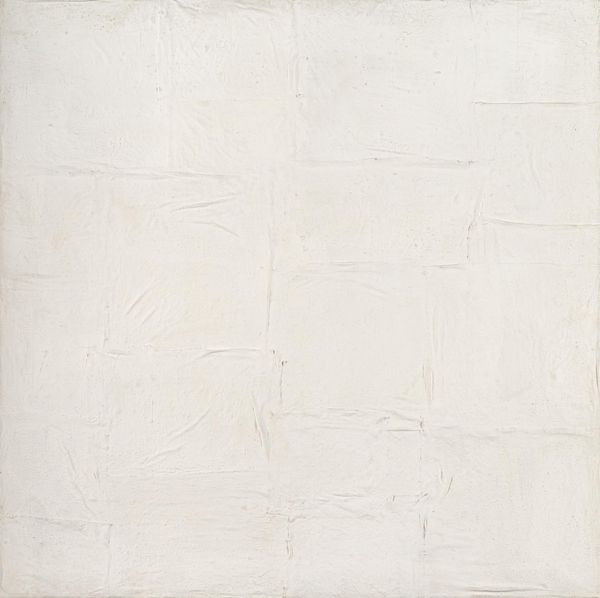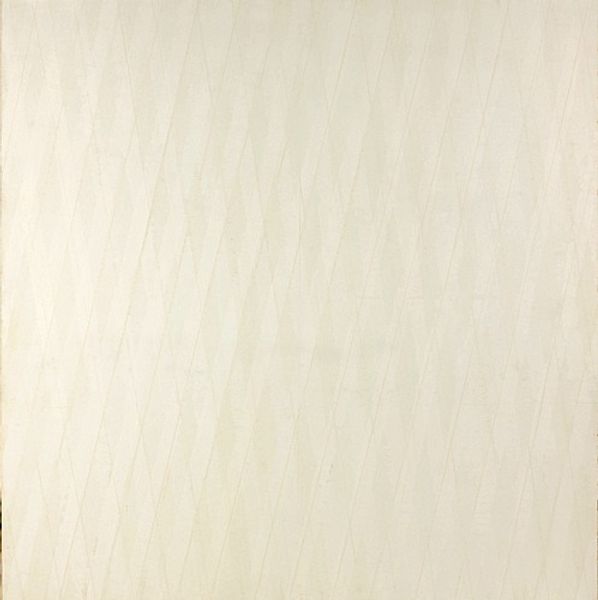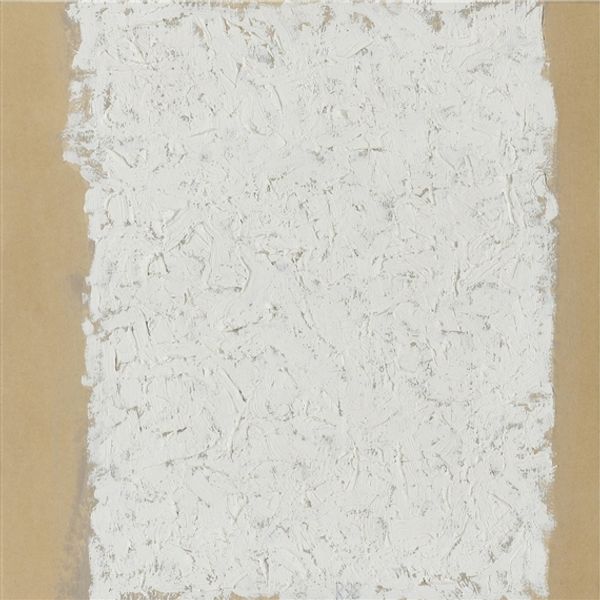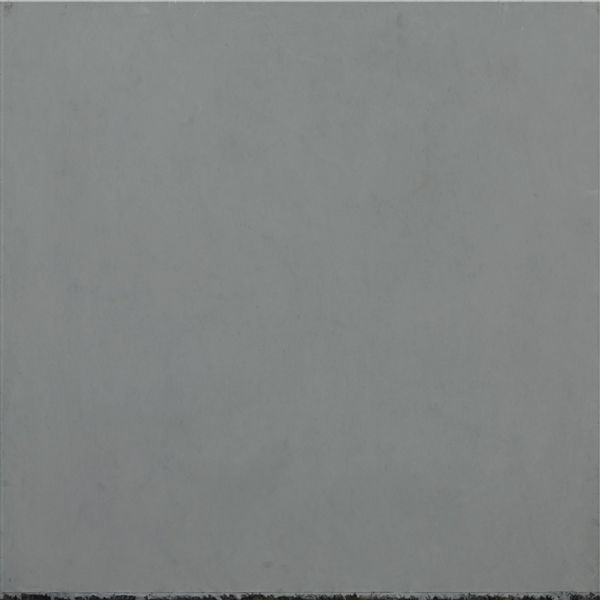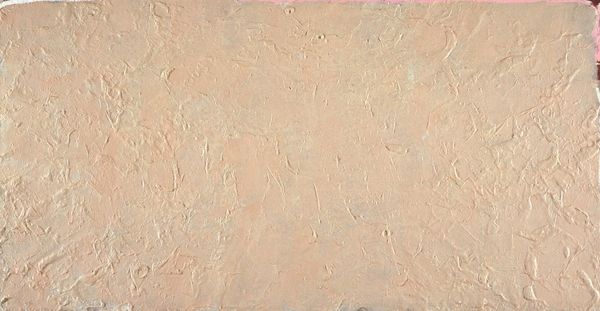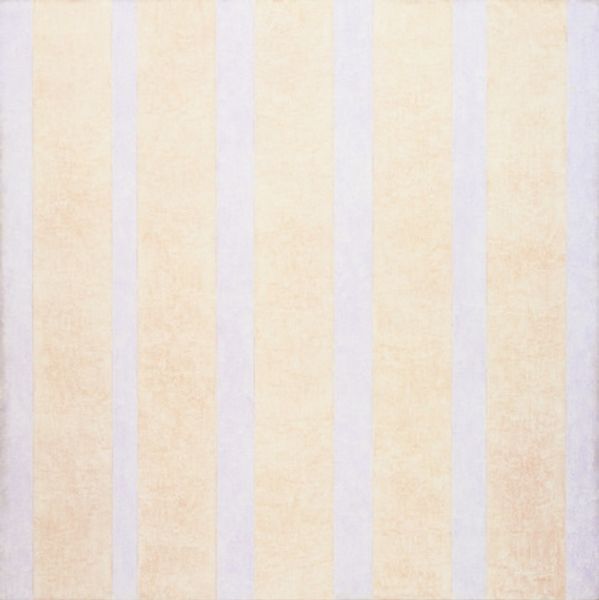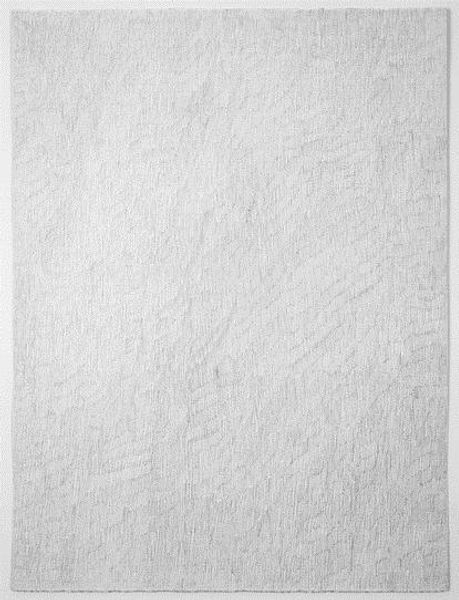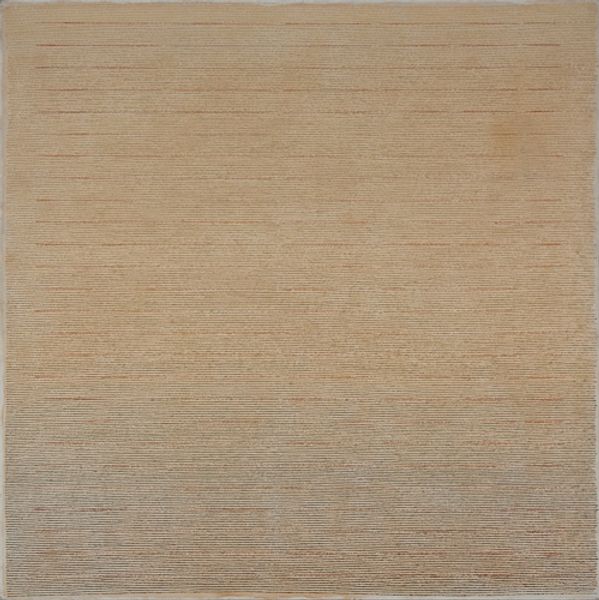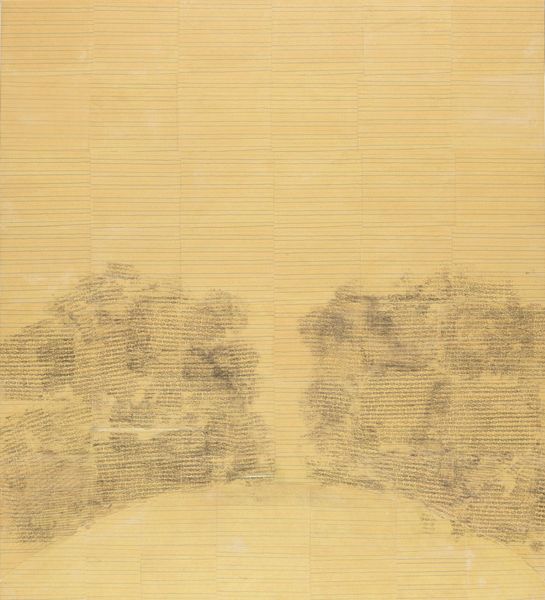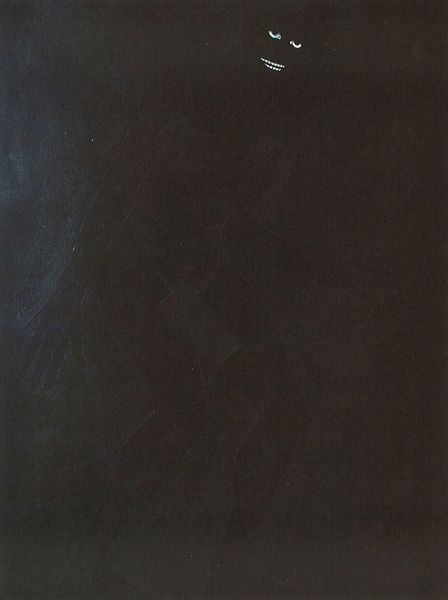
#
neo-dada
Copyright: Piero Manzoni,Fair Use
Piero Manzoni created this "Achrome" at an unknown date using canvas and gesso. The surface is dominated by a monochromatic field of white, divided into what appears to be a grid-like structure, giving an impression of layered segments. This composition evokes a tactile and material presence, inviting the viewer to consider texture over traditional pictorial content. Manzoni's "Achrome" challenges the conventional understanding of painting. By reducing color to a minimum and emphasizing the material qualities of the canvas and gesso, he destabilizes the traditional idea of art as representation. His use of repetitive, grid-like patterns, along with the interplay of flatness and depth, engages with semiotic and structuralist ideas about how meaning is constructed through systems and signs. The absence of color and conventional imagery encourages us to question the values and categories typically associated with artistic expression. The artwork serves as a site of ongoing interpretation, pushing the boundaries of what we consider art. The tactile surface and repetitive pattern become part of a broader cultural and philosophical discourse.
Comments
No comments
Be the first to comment and join the conversation on the ultimate creative platform.
